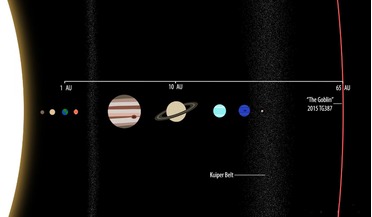 03 October 2018
Newly discovered far-flung object supports Planet X existence
03 October 2018
Newly discovered far-flung object supports Planet X existence
... planet to go once around the Sun) is one year. Jupiter’s orbital period is about 12 years, Saturn’s is 29 years and Uranus completes its orbital period once in a human lifetime. Planet X on the other hand, which is postulated to be 60 billion miles...
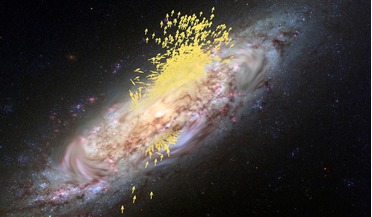 02 November 2018
Scientists unravel the formation history of the Milky Way
02 November 2018
Scientists unravel the formation history of the Milky Way
... after one of the Giants in ancient Greek mythology, who was the offspring of Gaia, the Earth, and Uranus, the Sky. Its impact into the Milky Way was picked out by a team of astronomers led by Amina...
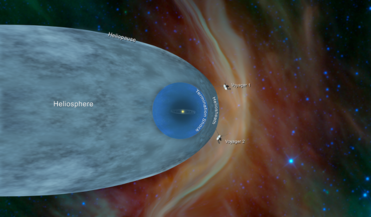 11 December 2018
Voyager 2 joins its twin in interstellar space
11 December 2018
Voyager 2 joins its twin in interstellar space
... fuel left in the tank, the probes were pushed on further to study the two outermost giant planets, Uranus and Neptune. Since then the two have been surveying all in their path as they continue on a most...
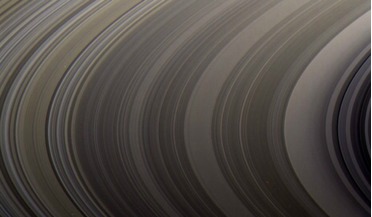 19 December 2018
Saturn's iconic rings are dying fast say scientists
19 December 2018
Saturn's iconic rings are dying fast say scientists
... are disappearing at an alarming rate. Saturn is not the only planet in our Solar System to have rings; Jupiter, Uranus and Neptune each have rings too. But at 282,000 kilometres (175,000 miles) across and...
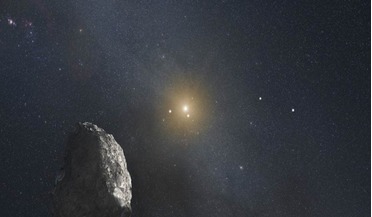 27 February 2019
FarFarOut beats FarOut as most distant Solar System body ever seen
27 February 2019
FarFarOut beats FarOut as most distant Solar System body ever seen
... are confined to a region known as no-man’s land and never come in close enough to giant planets like Neptune, Uranus and Jupiter, to have significant gravitational interactions with them. These far-flung balls of water-ice can...
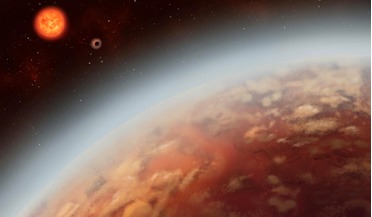 11 September 2019
First detection of atmospheric water vapour on 'super-Earth' in habitable zone
11 September 2019
First detection of atmospheric water vapour on 'super-Earth' in habitable zone
... planets with a mass higher than Earth's, but substantially below those of the Solar System's ice giants, Uranus and Neptune (which are 14.5 and 17 times Earth's, respectively). The term is something of a misnomer though as it refers only...